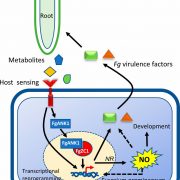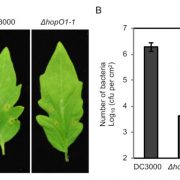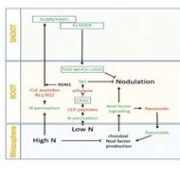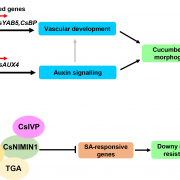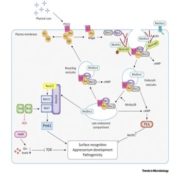Review: Selective redox signaling shapes plant-pathogen interactions (Plant Physiol.)
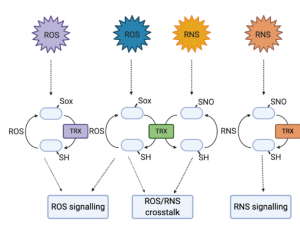 Reactive oxygen species (ROS) and reactive nitrogen species (RNS) are often presented as something of enigmas. They are damaging by-products of metabolism and stress, but also intentionally produced as a signal and defense response to pathogens. This excellent Update by Bleau and Spoel synthesizes new work towards understanding these apparently conflicting roles for ROS/RNS. First they describe the locations and fine regulation of ROS/RNS-producing enzymes (from plants and pathogens), and how these different sources contribute to responses. They then describe how the ROS/RNS function as signals, such as their selective post-translational modifications of proteins including the key defense protein and redox sensor NPR1, and discuss thioredoxins that are emerging as central players in selective redox signaling. The authors also describe the new proteomics methods that have been instrumental in these perspectives. Finally, the discuss how the pathogens have escalated the arms race by “hijacking and manipulating” the plant’s redox-dependent immune response. (Summary by Mary Williams @PlantTeaching) Plant Physiol. 10.1093/plphys/kiaa088/6117245
Reactive oxygen species (ROS) and reactive nitrogen species (RNS) are often presented as something of enigmas. They are damaging by-products of metabolism and stress, but also intentionally produced as a signal and defense response to pathogens. This excellent Update by Bleau and Spoel synthesizes new work towards understanding these apparently conflicting roles for ROS/RNS. First they describe the locations and fine regulation of ROS/RNS-producing enzymes (from plants and pathogens), and how these different sources contribute to responses. They then describe how the ROS/RNS function as signals, such as their selective post-translational modifications of proteins including the key defense protein and redox sensor NPR1, and discuss thioredoxins that are emerging as central players in selective redox signaling. The authors also describe the new proteomics methods that have been instrumental in these perspectives. Finally, the discuss how the pathogens have escalated the arms race by “hijacking and manipulating” the plant’s redox-dependent immune response. (Summary by Mary Williams @PlantTeaching) Plant Physiol. 10.1093/plphys/kiaa088/6117245


